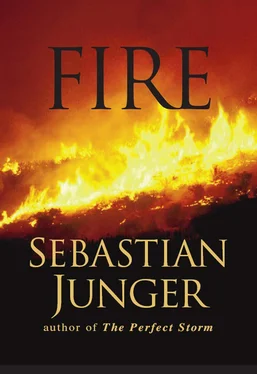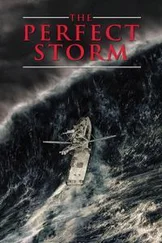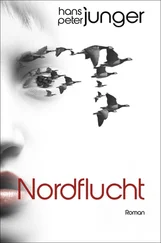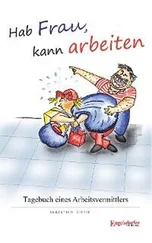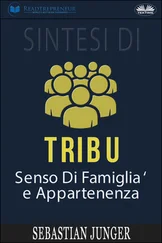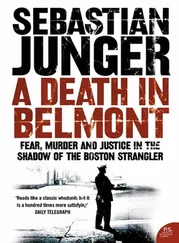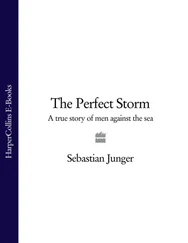Long before we’d gotten there, other journalists and Sierra Leonean detectives had scoured the premises for incriminating documents. According to Minister of Information Julius Spencer, they found evidence that Sankoh had organized a coup for Tuesday, May 9, but the protest at his compound the day before had derailed it. A number of rebel commanders, including Denis (“Superman”) Mingo, Colonel Akim, and Brigadier Issa Sesay, and at least one Ukrainian mercenary had infiltrated the city to coordinate the uprising. Some of these men were killed or arrested in the days following the massacre. The bodyguards I’d seen driving up the hill to Sankoh’s house, pumping their fists and singing: They all had been thinking that within days their leader would be in control of the capital. In that light, their bravado made perfect sense.
More important than evidence of a planned coup, however, were secret RUF reports on mining operations in Kono. A blue composition book appeared to list every diamond collected by just one RUF officer between October 30, 1998, and July 31, 1999. The book had been meant for use by schoolchildren and had “God Bless the Teacher” and “PEACE” printed on the cover. For NAME the owner had written in careful script, “Capt Joseph ‘K’ Bakundu.” For SCHOOL he’d written, “R.U.F. Minning Unite.” And for CLASS he’d written, “Black guard.”
The Blackguards were Sankoh’s elite bodyguard unit. Bakundu apparently was responsible for collecting diamonds from about fifteen rebel dealers up in Kono and Tongo Field, and they in turn had presumably collected them from diggers in the bush. Some of the names on the list—Sam Bockarie (known as Mosquito), Colonel Akim—were those of well-known rebel commanders. The book lists a nine-month haul of about 786 carats of white diamonds and 887 carats of industrials. The stones included a 17-carat orange, a 9-carat white, and numerous others between 1 and 6 carats. The RUF is thought to be exporting about half a million carats a year, which would suggest there were about three hundred guys like Bakundu gathering diamonds for Sankoh.
Not only was the RUF mining diamonds, but it was also in contact with Western businessmen. In his official capacity as chairman of the Strategic Resources commission, Sankoh had drawn up an agreement to buy and sell precious stones with Samuel Isidoor Weinberger of London. Sankoh had also negotiated with Raymond Clive Kramer of the Kramer Group of Companies in South Africa about expert consulting on mining operations. There was a letter from Patrick Everarts de Velp, the Walloon trade representative in Washington (Wallonia is part of Belgium), who was trying to arrange for the sale of some mining equipment to Sankoh. “It is always a great honour and a privilege to help you,” de Velp wrote.
And there were many, many letters from an American named John Caldwell. Caldwell, the president of the U.S. Trading & Investment Company, in Washington, D.C., had tried to arrange agricultural deals through Sankoh, including a thirty-two-million-dollar food shipment. (Sankoh had opposed that particular deal because he didn’t want the food to be handled by international relief organizations—presumably because they would not favor the RUF in their distribution.) Caldwell is a French-born naturalized American who served in NATO intelligence in the mid-1960s and then became vice-president of international affairs for the U.S. Chamber of Commerce. Last October, he and his business partner, a Belgian named Michel Desaedeleer, went to Freetown to negotiate what they say was a comprehensive development program for Sierra Leone. They claim that their idea was to bring in an international mining firm, such as De Beers, and use the revenue to fund agricultural projects in rural areas.
In order to broker a deal of that magnitude, however, they needed to have something to offer, and last October 23, they got it. Sankoh signed a contract that gave them a monopoly on all gold and diamond mining in the rebel-controlled territory of Sierra Leone. The contract was between the RUF and the BECA Group, an offshore company registered in Tortola, British Virgin Islands, which listed Desaedeleer and Caldwell as directors. BECA was to run all mining operations in the RUF-controlled areas and handle all export and sale of diamonds on the international market. The RUF was to provide security and labor for the mining operations and facilitate the transportation of diamonds out of the country. BECA and the RUF would split all profits.
The contract specified that the agreement would become null and void as soon as the government of Sierra Leone activated the Commission for the Management of Strategic Resources, National Reconstruction and Development, of which Sankoh was chairman. At that point, a new contract would be negotiated between BECA and the commission. Until then, however, mining in Sierra Leone was wide open to anyone who wanted to do business with the RUF.
Upon returning to the United States, Desaedeleer went to the embassy of Sierra Leone and met with John Leigh, the Sierra Leonean ambassador to the United States. He showed Leigh the contract and offered to sell it to him for ten million dollars, which he claimed was its value on the open market. In effect, he was trying to sell something to the government of Sierra Leone that Sankoh had no legal basis for giving away in the first place. Not only did the RUF have no legal claim to mining rights in Sierra Leone, but even in his capacity as chairman of the Strategic Resources commission, Sankoh did not have the authority to negotiate a contract by himself. At the very least, he needed the signatures of the other members of the commission, which he obviously did not have. Shocked at the proposal—and its price—Ambassador Leigh says he asked to make a photocopy of the document so that he could send it to his government. Desaedeleer refused, and Leigh asked him to leave the embassy immediately.
After that, Caldwell and Desaedeleer tried to sell the license to various mining companies—De Beers, Diamond Works, Rex, Rio Tinto—but were turned down by all of them. Finally, Desaedeleer says, he got the ear of Charles Finkelstein, a member of a prominent Antwerp diamond family. Finkelstein later denied any professional involvement with Desaedeleer, but at the time Desaedeleer seemed to think he had found a partner. At the very least, he may have thought that Finkelstein’s name would impress Sankoh.
“With Charles, we can BUY,” Desaedeleer wrote to Sankoh on April 6. “Charles has the financial ability to do anything, a private jet from Belgium to Kono or to Monrovia or to Freetown or any other solution…. What we have to solve: How will you convince the people in charge in Kono to bring everything to you instead of 10% and [if] it is not possible how are you going to convince them to sell those 90% to us instead of keeping it or selling it to the Lebanese or whoever?…Foday what I’m saying is this, the money is finally on the table, you make sure that the merchandise is available one way or another and all of us will be ok.”
Desaedeleer may have been vying with half a dozen other Western businessmen—all pursuing mining contracts—for Sankoh’s attention. In a sense these men were not the problem; they were just trying to exploit one. The real problem was that Sankoh was presiding over a system in which all the diamonds of Kono were being diverted from Freetown and smuggled out of the country. According to Ambassador Leigh, other documents found at Sankoh’s house corroborate this; one even specified that 10 percent of the Kono diamonds went to Sankoh, 10 percent to the rebel commander Sam Bockarie, and 30 percent was used to buy arms and ammunition. The rest went to Liberian president Charles Taylor.
Weapons were the key. Without them the rebels could not control the diamond-producing regions, and without diamonds the rebels could not buy weapons. And there was plenty of evidence that weapons were making it into Sierra Leone. The British press reported that shortly before the January 6 invasion, a forty-ton shipment of weapons from Bratislava, Slovakia, had been flown into rebel-held eastern Sierra Leone by two British transport companies. And according to the New York–based organization Human Rights Watch, in April 1999, the ECOMOG commander in Sierra Leone reported that sixty-eight tons of weapons—including Strela-3 surface-to-air missiles and Metis guided antitank missile systems—had been flown into Burkina Faso on a Ukrainian-registered transport plane. From there, ECOMOG claimed, they were loaded onto smaller planes and flown into RUF territory. The end user certificate stipulated that the weapons could not be exported to another country, but in the fast and loose world of international arms trading, that hardly mattered.
Читать дальше
